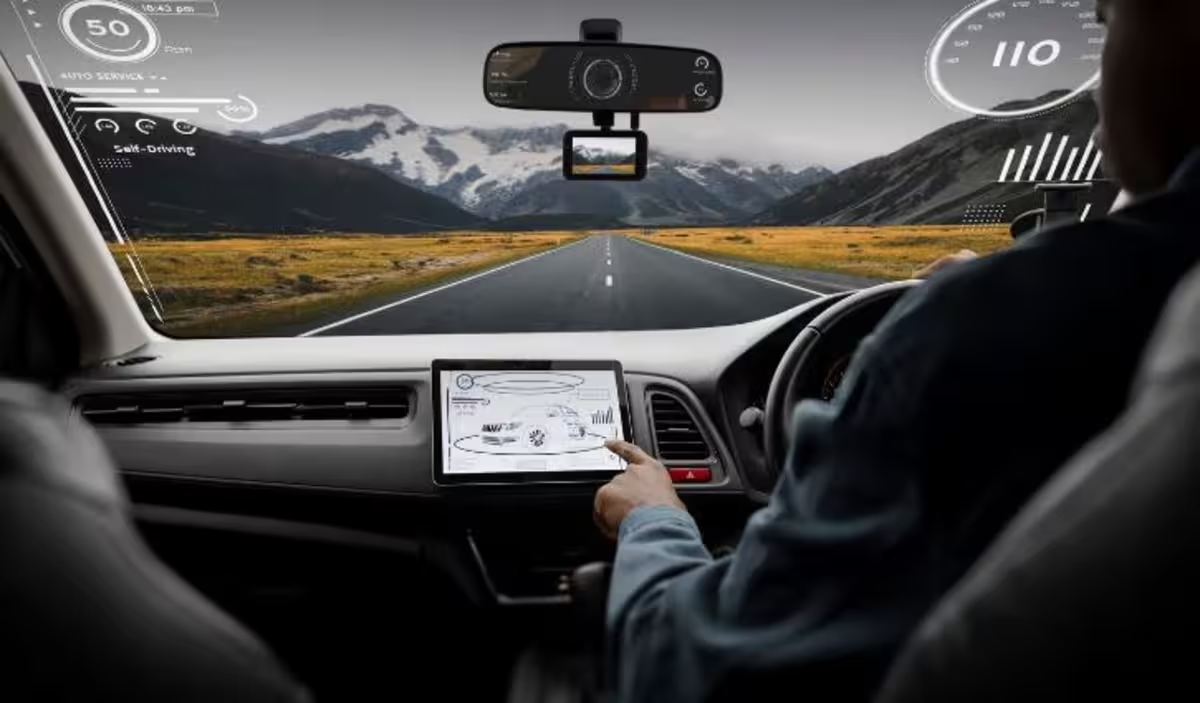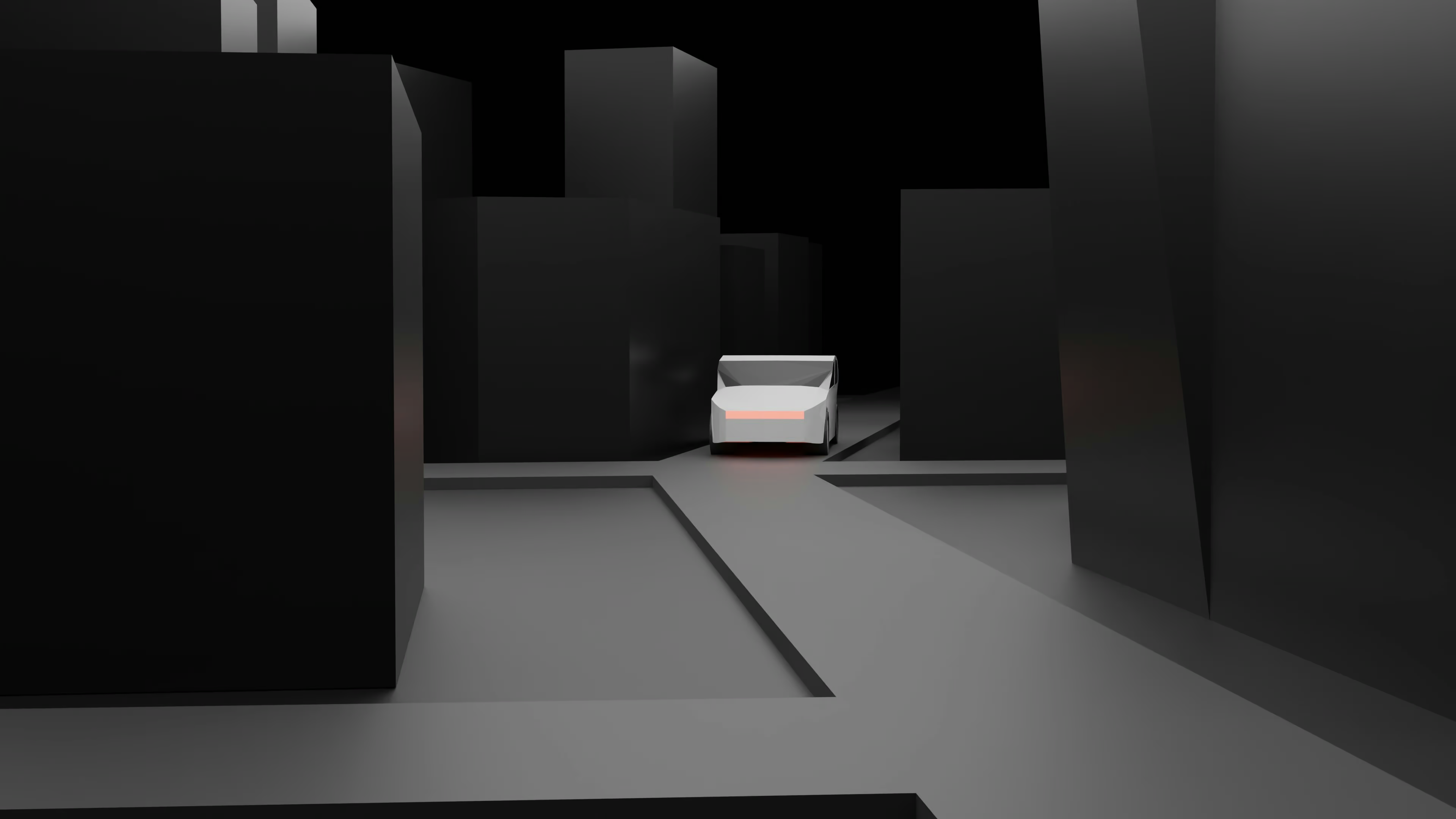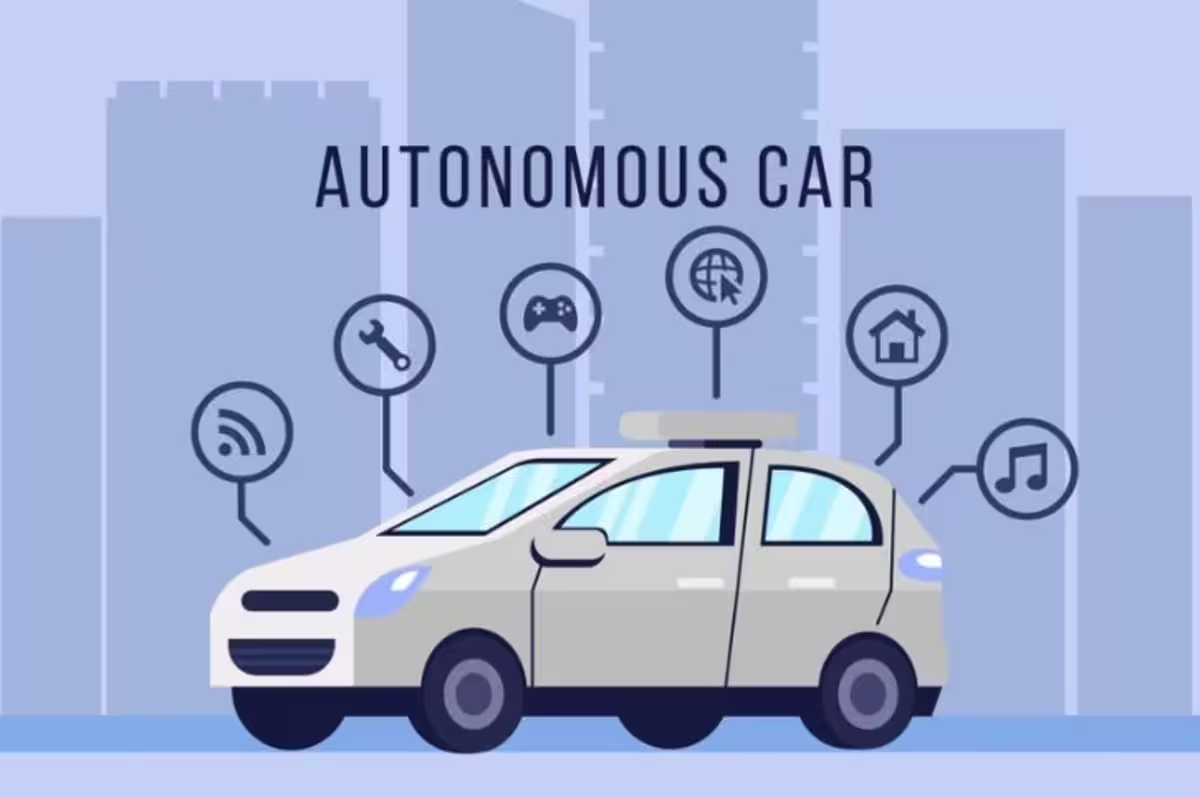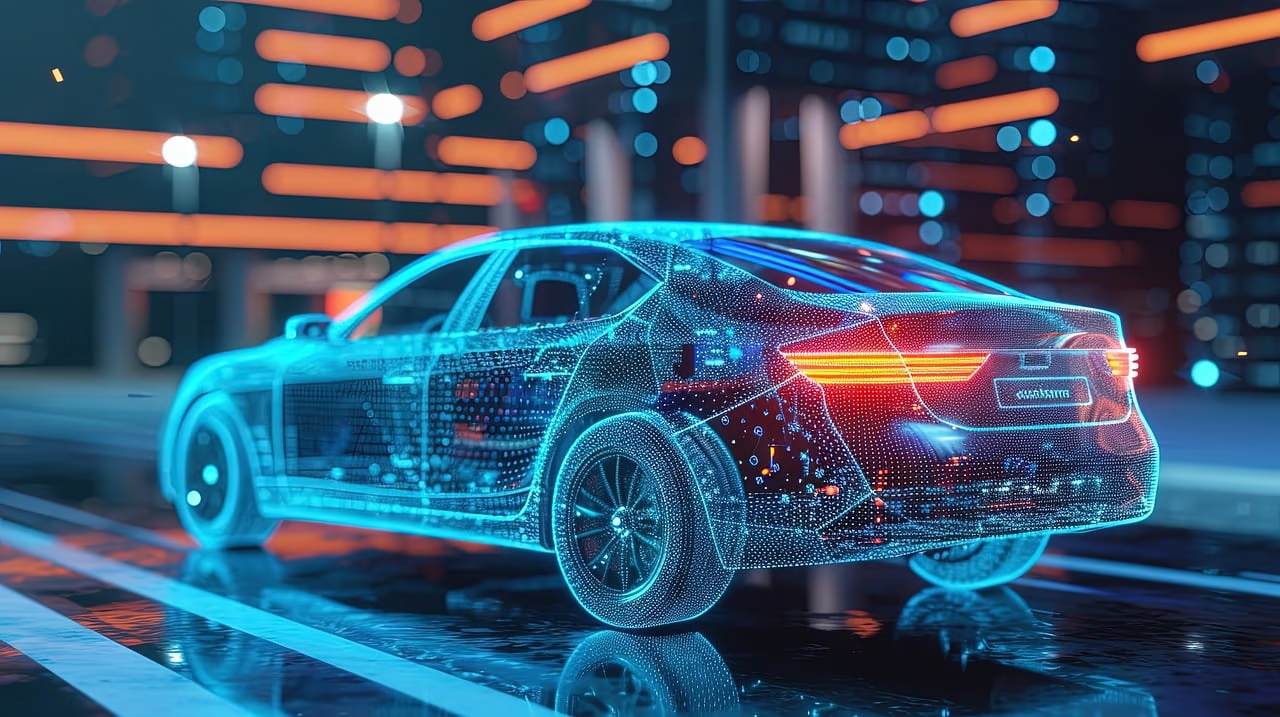Autonomous Driving: Mercedes-Benz as industry leader & Tesla's 'Hype'
The Evolution of Automotive Compute Architecture
Let’s start by talking about the backbone of the transformation—vehicle compute architecture. Remember the days when cars were just mechanical beasts with a few electronic gadgets thrown in? Well, those days are long gone. Back in the early 2000s, vehicles relied on distributed systems, where each function, like powertrain or infotainment, had its own little brain (ECU). These systems didn’t really talk to each other much, and if they did, it was often clunky and limited. Fast forward to 2024, and we’re now seeing a shift towards centralized compute architecture in vehicles, which is a key enabler for the advanced autonomous driving technology being developed by both Mercedes-Benz and Tesla. While Mercedes-Benz focuses on precision with their Drive Pilot Level 3, Tesla has captured the market's attention with its Full Self Driving (FSD) hype, relying on vision-based autonomy.
Fast forward to today, and things have drastically changed. Modern vehicles are far more centralized. Think of it as moving from a small village of independent houses to a buzzing city with a central hub connecting everything. This "city" is what we call a centralized architecture, where a few powerful domain controllers and central gateways manage the bulk of the vehicle’s operations. But what’s really exciting is where we’re headed: by 2030, we’ll likely see fully centralized vehicle architectures, with a single central computer taking charge of everything. This isn’t just cool tech talk—it’s what will make truly autonomous driving possible, where cars can think, react, and even learn without any human input.
Mercedes-Benz: The Perfectionist's Approach to Autonomy
Mercedes-Benz is renowned for its precision engineering, and their approach to autonomous driving is no different. They’re taking a methodical, safety-first approach, ensuring every step forward is backed by rigorous testing. As of 2021, Mercedes-Benz ranked first in overall autonomy readiness, achieving the highest autonomous score for three consecutive years based on SBD’s criteria. Their focus on offering a wide range of Level 1 and Level 2 features across their entire model lineup, supported by robust sensor fusion, highlights their commitment to precision and safety.
Strategic Approach: A Safe and Steady Climb
Their ADAS (Advanced Driver Assistance Systems) offerings are an engineers wet dream (excuse the phrase), and amongst the most comprehensive, particularly in the L1 and L2 categories currently. These systems include features enabled by sensor fusion of radar and stereo vision cameras, which provide advanced capabilities such as night vision assistance using a combination of near and far infrared systems.
Their L3 system, branded as "Drive Pilot," launched in 2021 on the S-Class and EQS models, is a game-changer in the industry. Initially available in Germany, Drive Pilot can take over full driving responsibilities in certain conditions like on highways, allowing you to relax and let the car do the work. This system is supported by a suite of sensors, including radar, lidar, cameras, and ultrasonic sensors, creating a 3D map of the vehicle's surroundings.
But Mercedes-Benz isn't stopping there. They're heavily investing in research and partnerships, such as their collaboration with Bosch, aiming for Level 4 autonomy by 2026. At this stage, vehicles will be capable of handling almost all driving tasks independently, pushing the boundaries of autonomous driving even further.
Beyond Passenger Cars: A Broader Vision for Autonomy
Mercedes-Benz's vision for autonomy extends well beyond just passenger cars, encompassing both people and goods services. For instance, their Future Bus with CityPilot, tested in Amsterdam in 2016, showcased their commitment to revolutionizing public transport. This bus, equipped with long- and short-range radar, cameras, and GPS navigation systems, can differentiate between conventional and BRT (Bus Rapid Transit) routes suitable for automated driving. The Future Bus represents a significant leap forward in autonomous public transport, with plans for further development and expansion in the coming years.
In the realm of autonomous taxis, Mercedes-Benz has been conducting pilot programs in collaboration with Bosch. A notable example is the self-driving ride-hailing mobility pilot using S-Class taxis in San Jose, USA. These vehicles operate on fixed routes with safety drivers onboard, utilizing lidar, stereo-vision cameras, and radars for sensing. The goal is to develop production-ready SAE Level 4 and Level 5 autonomous mobility services, with plans for expansion in Europe and Japan.
Mercedes-Benz is also making strides in goods delivery services. In 2016, they introduced the ‘mothership’ concept, where Sprinter vans are used to ferry Starship delivery vehicles for last-mile delivery of goods and packages to end customers. This system, initially piloted in Europe, aims to enhance the efficiency and speed of urban logistics. Furthermore, the Freightliner Inspiration Truck, introduced in 2015, became the first licensed autonomous commercial truck to operate in the US. Mercedes-Benz has continued to develop this technology, including testing a Freightliner Cascadia tractor-trailer equipped with stereo cameras, long- and short-range radars, and V2V (Vehicle-to-Vehicle) platooning features.
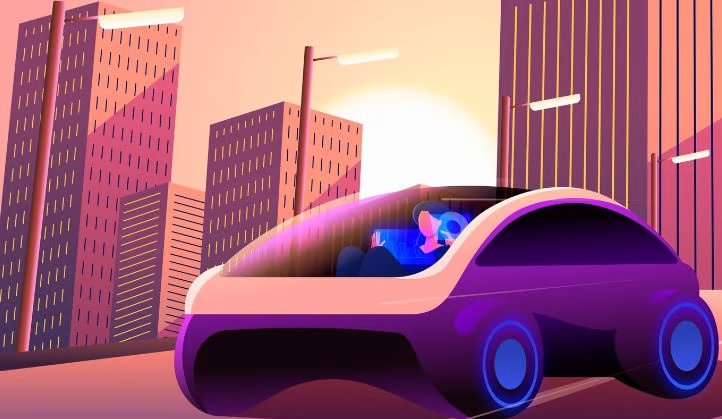
Tesla: The Bold Innovator Betting Big on Vision
Tesla, on the other hand, is the maverick of the automotive world. We at EV-Global believe they probably have more hype than technical prowess behind their current offerings (relatively speaking, ofcourse). But they’ve always done things differently, and their approach to autonomy is no exception. Tesla’s strategy is bold—some might even say risky—but there’s no denying that it’s pushing the entire industry forward in ways no one else has.
Tesla’s Strategic Approach: All-In on Vision
Tesla’s Full-Self Driving (FSD) system is their crown jewel, and it’s unlike anything else on the market. Instead of relying on a mix of sensors like radar and lidar, Tesla has gone all-in on cameras and vision-based systems. The philosophy behind this is simple: if humans can drive with just their eyes, why can’t a car? Of course, it’s a bit more complicated than that, but the idea is to create a system that can learn and adapt much like a human driver would.
Tesla’s FSD Beta, which first rolled out in 2020, is a living, breathing example of this strategy in action. Unlike traditional automakers who tend to release big updates every few years, Tesla treats FSD as a constantly evolving product. They push out updates regularly, tweaking and improving the system based on real-world data. This iterative approach has allowed Tesla to make significant strides in a short amount of time. For instance, the transition to a vision-only system in the 2021 Beta v9.0 was a major shift. Initially, there were some growing pains—like issues with detecting certain obstacles—but Tesla quickly adapted, and the latest updates show significant improvements in areas like navigating city streets, handling unprotected turns, and even recognizing pedestrians and cyclists.
Tesla’s Vision Beyond Passenger Vehicles
Tesla’s ambitions aren’t limited to passenger cars, either. The Tesla Semi, for example, is set to revolutionize the trucking industry. This all-electric, Class 8 truck will leverage Tesla’s autonomous driving tech to offer long-haul self-driving capabilities. It’s not just about cutting emissions; it’s about making freight transport more efficient and safer. Then there’s the Tesla Network, a proposed fleet of autonomous ride-hailing vehicles. Imagine a world where you can summon a Tesla with your smartphone, and it arrives at your doorstep, ready to take you wherever you need to go—all without a driver. That’s the future Tesla is working towards.
Strategic Trends Shaping the Future of Autonomous Driving
As Mercedes-Benz and Tesla chart their paths towards full autonomy, several broader trends are emerging that will shape the future of the industry:
Real-Time Mapping vs. HD Maps
Tesla is pioneering the use of real-time mapping through its camera-based systems. This allows Tesla vehicles to adapt to changing road conditions on the fly, offering greater flexibility, especially in unfamiliar territories. However, this approach requires significant computing power and continuous data processing.
On the flip side, companies like Mercedes-Benz are sticking with HD maps, which provide detailed, pre-loaded information about road environments. This offers a reliable, stable foundation for autonomous driving but may not be as adaptable as real-time systems.
Triple Redundancy vs. Vision-Only
The debate between Tesla’s vision-only system and the triple redundancy approach used by other automakers, like Mercedes-Benz, is one of the most hotly contested topics in the industry. Triple redundancy, which combines cameras, radar, and lidar, offers multiple layers of safety, ensuring that if one system fails, others can pick up the slack. This approach is seen as more conservative but also more reliable.
Tesla’s vision-only approach is innovative and has the potential to simplify vehicle design and reduce costs. However, it’s also more prone to challenges in adverse conditions, such as fog or heavy rain, where cameras alone might struggle.
Centralized Compute Architectures
Both Tesla and Mercedes-Benz are moving towards centralized compute architectures, but with slightly different end goals. Tesla’s architecture is designed to support its aggressive software update cycle, allowing the company to continuously refine its autonomous driving algorithms and add new features. This approach is highly dynamic but also places a lot of trust in the software’s ability to handle complex driving tasks.
Mercedes-Benz, while also embracing centralized architectures, is placing a stronger emphasis on safety and reliability. Their systems are designed to ensure that even if a failure occurs, the vehicle can continue to operate safely. This approach is more conservative but aligns well with Mercedes-Benz’s reputation for quality and safety.
Regulatory and Ethical Considerations
As autonomous driving technology advances, regulatory bodies around the world are playing catch-up. Mercedes-Benz’s methodical approach, which involves extensive testing and gradual rollouts, aligns well with the current regulatory landscape. They’re working closely with regulators to ensure that their systems meet all safety standards before they hit the road.
Tesla, on the other hand, is known for pushing the envelope. Their decision to release FSD Beta to a select group of customers has sparked debate about the ethics of testing autonomous systems in real-world conditions. While this approach allows Tesla to gather valuable data and improve their systems rapidly, it also raises questions about safety and liability.
EV-Global Verdicht: Two Roads Diverged in the Autonomous Landscape
So, where does this leave us? Mercedes-Benz and Tesla represent two very different visions of the future of driving. Mercedes-Benz is taking the high road—methodical, safety-focused, and with a clear, steady path towards full autonomy. They’re leveraging their engineering prowess and deep expertise in automotive safety to create systems that are reliable, robust, and ready for the real world.
Tesla, on the other hand, definitely has a lot of hype, it's the disruptor—bold, innovative, and unafraid to challenge the status quo. We at EV-Global are convinved they are not close to Mercedes-Benz, but people have doubted Tesla often and been wrong. Our talks with Tesla experts have revealed that further progression in autonomous driving without LIDARs is simply impossible and bordering on Elon Musk's hubris. I mean they've proven us wrong before, several times. Tesla’s approach is less about following a traditional path and more about blazing a new trail entirely.
As these two companies continue to develop their technologies, the broader industry will no doubt be influenced by their successes and failures. The next decade will be crucial in determining which approach—Mercedes-Benz’s cautious precision or Tesla’s bold innovation—will ultimately prevail. Whether it’s Mercedes-Benz’s centralized approach with Drive Pilot or Tesla’s push for vision-based autonomy, the future of self-driving cars will likely see a mix of both strategies. But one thing is certain: the autonomous vehicle industry trends of 2024 will set the stage for the future, and it’s going to be one hell of a ride.
